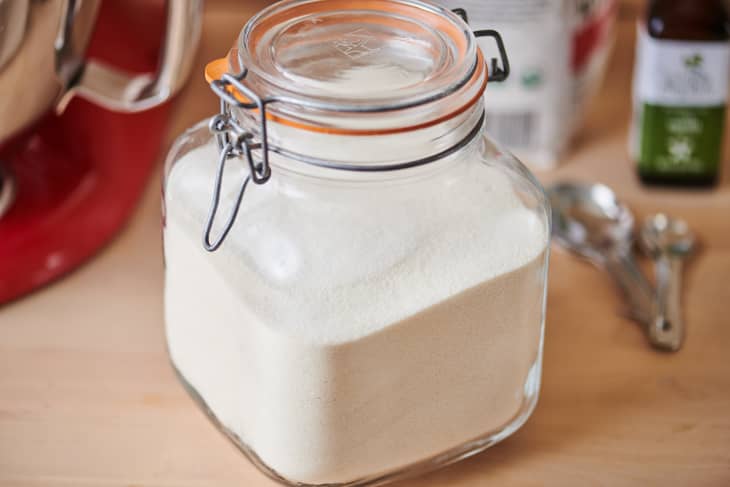What Does a Gram of Sugar, Salt, or Fat Really Look Like?
I always check nutrition labels when I’m at the grocery store and use them to help pick the best option among the variety of pre-packaged foods I purchase. I check sugar, salt, and fat contents, but to me all those numbers (measured in grams) are an abstract relative. What does a gram of sugar—or salt, or fat—really look like? I went on a mission to find out:
We’re used to measuring things by volume here in the US, and adding butter, sugar, and salt to our recipes by the cups and tablespoons. Since grams are a unit of weight, I pulled out my trusty kitchen scale to find the answers to my curiosity. Here’s what I discovered.
How Much is a Gram of Sugar, Salt, and Fat ?
A gram of sugar is about 1/4 teaspoon by volume, 1 gram of sodium is about 1/2 teaspoon of salt, and 1 gram of lard is 1/4 teaspoon.
What Is a Gram of Salt?
A gram of salt clocked in at about 1/6 tsp, making it the heaviest ingredient. But salt is composed of chloride as well, with only 40% of its weight accounting for pure sodium. Doing some math there gives us about a 1/2 tsp of salt to amount to 1 gram of sodium.
What Is a Gram of Sugar?
Next up was the sugar. I used granulated white sugar for this experiment and expected it to take a whole teaspoon of the stuff to equate to a gram. Surprisingly though, a gram of sugar weighed in just a tad shy of 1/4 tsp by volume.
What Is a Gram of Fat?
Finally, that scary three-letter word called fat. I used pure lard that I picked up at my local farmer’s market for this test. It took 1/4 tsp of lard by volume to weigh 1 gram.
The next thing I wondered is what this all looks like in the amounts of some of the pre-packaged foods I purchase. So I got out a box of the Amy’s Apple Toaster Pops that I enjoy every now and then. 10 grams of sugar, 3.5 grams of fat in a single serving. Here’s looking at you, kid.
Seeing things like that was a bit surprising. That’s a whole lot of sugar in that little toaster pastry! So then I took out a bottle of soy sauce. I was always curious how much salt was really in a single serving of that which I pour onto stir-fried noodles. I buy the low sodium variety and for this particular brand 1 tablespoon of soy sauce had about 1/4 tsp of salt (575mg).
